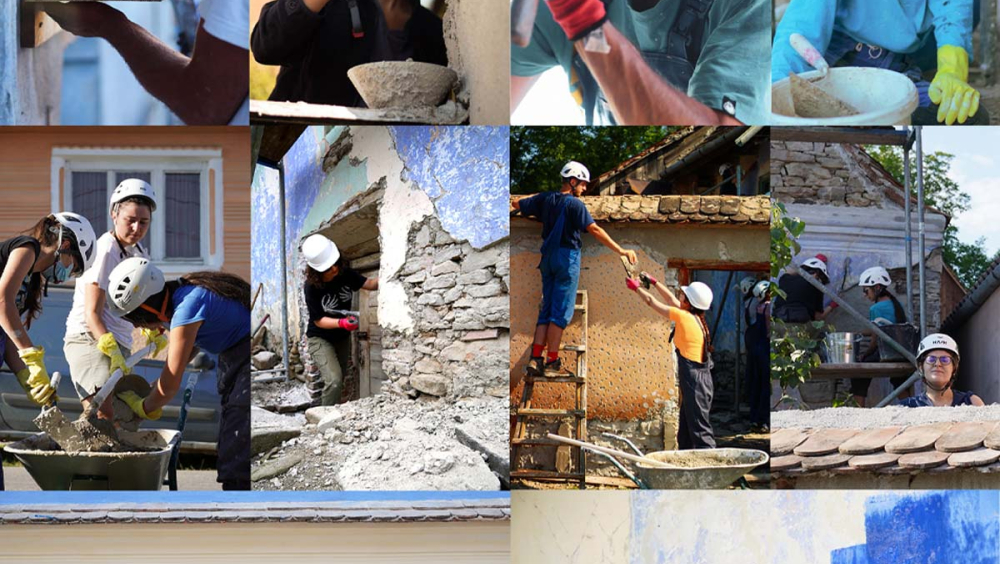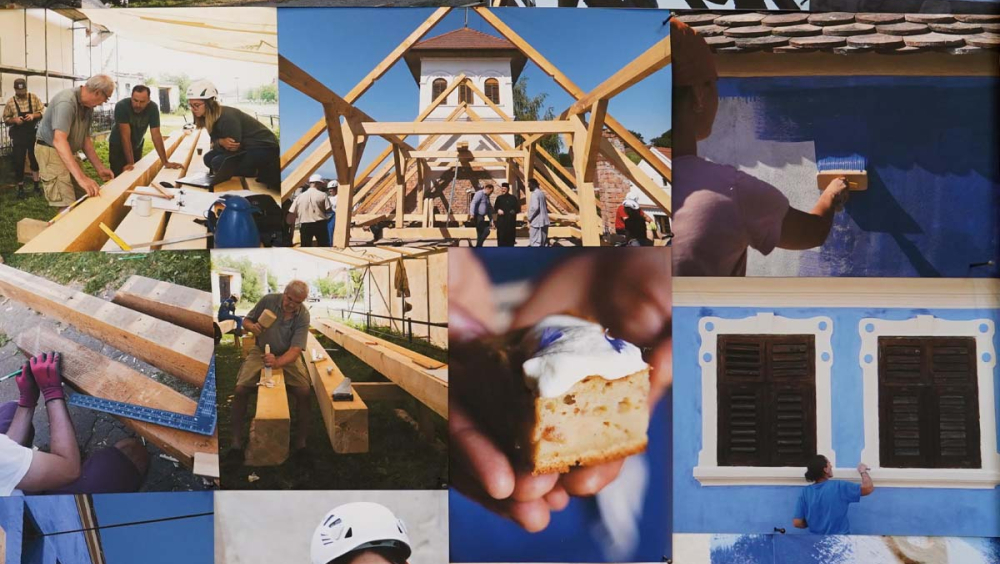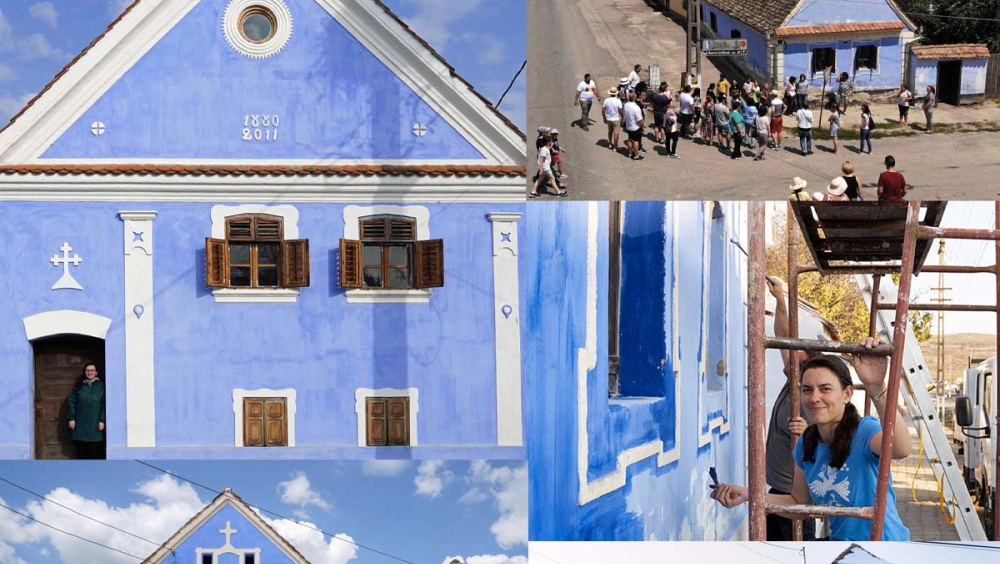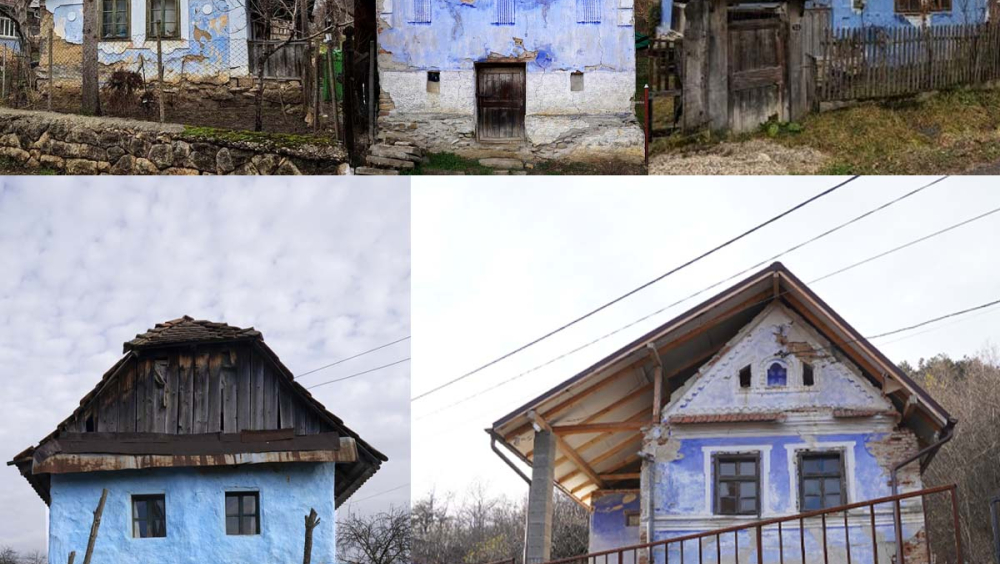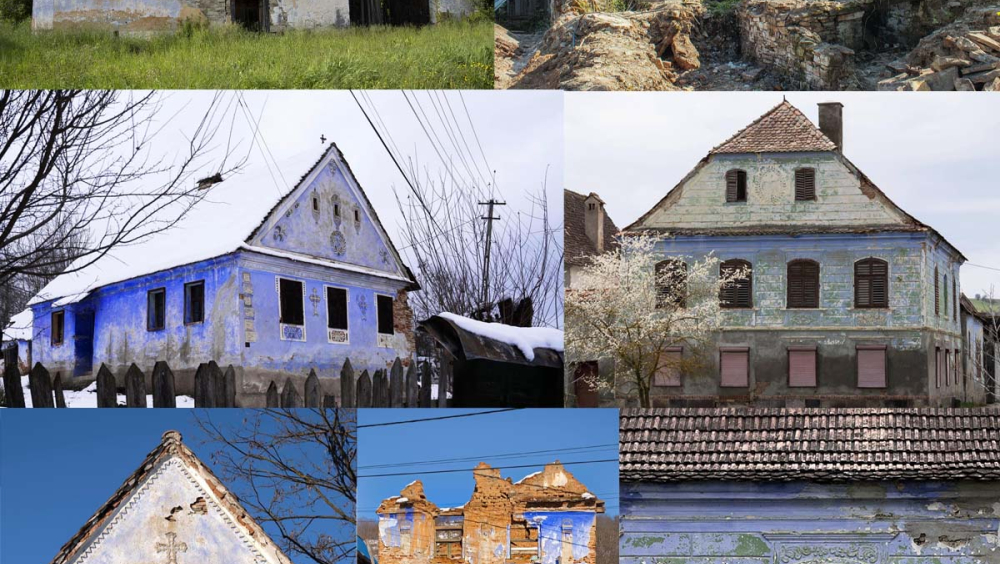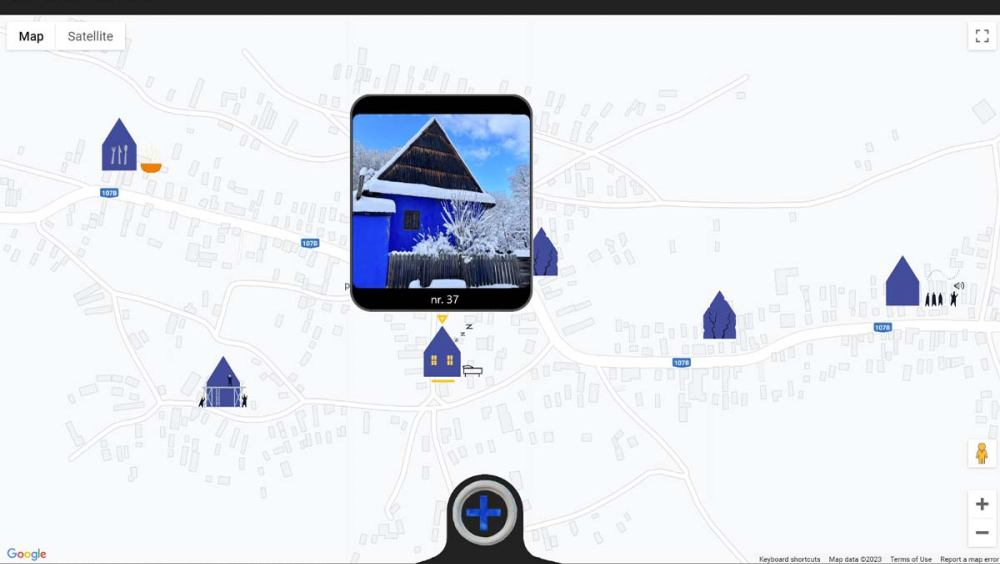Blue houses map : "Creation of a digital archive and an online map for a cultural and touristic route of Romanian blue houses"
The goal of the project is to highlight the traditional built environment/traditional material culture/heritage, which leads us to place-specific identity and traditions. Through this project, it is hoped to form a volunteer team of architects, restorers, photographers, developers, and storytellers to identify and preserve in digital format the blue houses with a specific architecture on Romanian territory. The goal is to develop a digital tool that will make it easier for people who are passionate about this subject to access a complex documentation process. We are considering the creation of an online platform – casealbastre.ro - to act as a catalogue of these houses, updated on a national scale with architectural information in order to educate the general public and encourage the safeguarding of these houses.
We love the blue of the Romanian houses so much that we decided to go looking for it around the country./We are so enamoured with the blue of Romanian homes, that we made the decision to search for it all around the country, and find all of its peculiarities. In the context of local architectures, we create the Blue Route to physically and digitally depict the Map of the Blue Homes throughout Romania, to preserve them in our collective memoryscape. Let's savour, treasure, and be inspired by their lovely lines, the hues of their eras, and our own.
Volunteers from the Monumentum Association and the "Ambulance for Monuments" support our team of architects, restorers, photographers, developers, and storytellers.
In order to transfer values utilizing new technologies, the project team wants to learn the stories of the residents of blue houses with vernacular architecture in Romania, of the owners who have personal histories that can serve as landmarks for the next generation.
We want a digital tool that people can use to start a documentation process when they find blue houses. Practically, casealbastre.ro is a catalogue of houses that is updated on a national level on a regular basis with architectural information in order to save these houses.
We want to create collaborative map with content focused on architectural criteria and storytelling, short films, and photographs, collecting testimonies of house inhabitants, recording of old building techniques and materials, and information about possible public services, accommodation, or other experiences in which you can participate as a volunteer or for a fee, as proposed by the owner. We want to get to know people and see how their lives intersect with the blue colour. In addition, a potential voluntary network in the rural area should be activated. We began this project in Transylvania.
Houses with vernacular architecture in Romania hide valuable stories about heritage, crafts and authentic life. In order to show respect and raise awareness of rural aesthetics, we want to cut these stories out of the countryside and bring the fragments of this reality to the cities. We also want to use modern technology to make the village world more accessible to young people in the cities. Younger generations are drawn to the topic by blue, which is a popular hue, has many symbolic meanings, and is also the colour that is most prevalent on traditional homes because it can be identified as a national colour.
We envision a digital tool that people can use when they come across blue houses. Simply determine the coordinates of the location, take photos, and upload them to the app, along with a brief narrative. The story is then continued through documentaries, in collaboration with architects and restorers, to validate the information. Then a Blue route can be created for those who want to walk, bike, or hike between houses, villages, or regions of Romania.
We will essentially have two types of users: the discoverer, who helps us map the blue houses by discovering the buildings, their stories, and adding them to the map, and the explorer, who enjoys the gathered and verified content by going hiking, knowing the places, the locals, learning, and relaxing.
We want the website casealbastre.ro to include an interactive map of areas with identifiable houses, with the option to view the map after applying a filter to the tints of the houses' blue wash and their architectural styles.
What motivates us to do this? Blue houses with traditional architecture are centuries old, and many of them vanish month after month. As a result, we want to keep them with us and in digital form as soon as possible. We want to use the restored ones as a model.
Based on the data we have so far, it appears that blue was the first colour to appear on Romanian houses, followed by white lime wash paint. This project, unique in Romania, offers us the courage to cherish our past, our people, and our places. This funding opportunity complements our objectives and gets us closer to achieving them.
European regions and countries have different histories, climates, resources and traditions. Crafts are the mirror of these specificities and tell the history of Europe through architecture, objects, fashion, design, gardens and much more. Despite the difficulties of covering such a big territory, this initiative was settled as a European project. This project’s transversal approach meets the purpose to showcase European (not only EU) diversity and richness through crafts professions and to support their safeguard as part of our intangible heritage.
All activities run by this initiative focus on generating engagement and raising awareness within the society about the importance of preserving crafts and bringing innovation to preserve employment for the future. The transversal approach is completed with a vertical, in-depth exploration of regions and cultures to valorise them and target local communities, thus developing a sense of pride and belonging.
This project has a strong European dimension from several points of view:
- Active participation/engagement/cooperation between the visitors and the local community in the event as we promote this kind of engagement/cooperation, by preparing the community for this kind of interaction, every time we go to the field to gather materials, explaining our approach to the owners.
- This project is mostly focused on people-centred activities, rather than a place or object-oriented activities because through this project, we support community education for the preservation of tangible heritage. To date, we have been successful in persuading the owners of classic blue houses with distinctive architecture to preserve them by remodelling with eco-friendly materials as opposed to demolishing them.
- Focus on links between heritage history, history and culture.
- Vision of cultural heritage as a resource, rather than an end or goal itself, as we firmly believe that by pursuing this project, we may not only prevent the destruction of a tangible cultural heritage, but also foster future cross-cultural interactions among groups in Europe.
- We promote the inclusion of youth, as the average age of the project team is 22 years. Also, our NGO, through other projects developed, involves young students and contributes to their education
- Networking and cooperation through use of technology to enable a broader reach for smaller communities, to engage with new wider audiences and to provide access for all, as our digital map will be used by European travellers and tourists.
The project's European component is noteworthy for the following reasons:
- Blue houses cover a wide range of European construction techniques, from earth houses to wooden and brick houses, covered with straw, shingles, or ceramics, and will be an important promotion of these European construction systems, after all. Blue houses are also found in several European countries, particularly in the Balkans.
- The symbolism of the facade motifs (tree of life, column, etc.) has an international and even intercontinental reach and will provide important details for the comprehension and application of astrological, culinary, historical, and fecundity-related prototypes.
